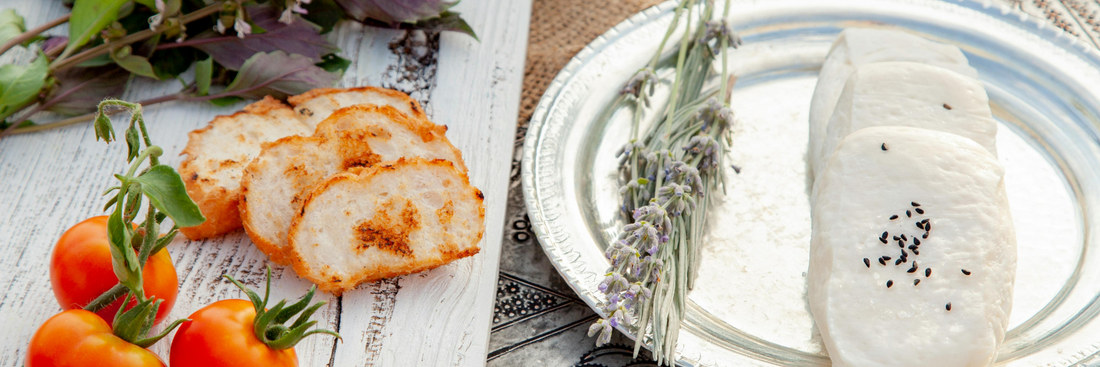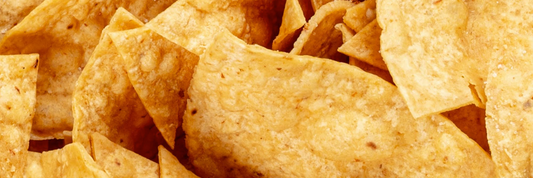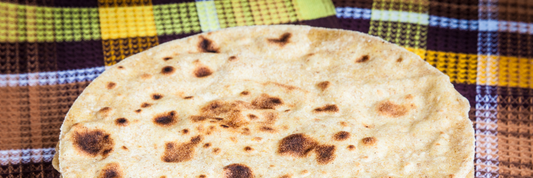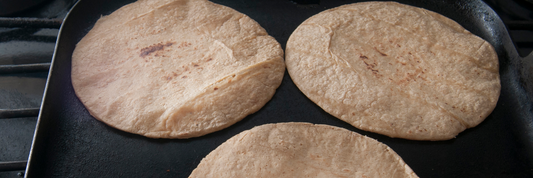Ricotta cheese is a soft, creamy dairy product known for its mild, slightly sweet flavor and versatile culinary uses. There are several types of ricotta cheese, each differing in texture, flavor, and milk source. From the classic whey-based ricotta to creamier whole milk and low-fat versions, as well as unique regional varieties like ricotta salata, affumicata, and forte, understanding these types can help you choose the best ricotta for your recipes. This quick guide highlights the essential types of ricotta cheese and their ideal applications in both sweet and savory dishes.
- How Long Does Cottage Cheese Last
- Ricotta vs Cream Cheese - Which Is Better for Baking?
- Ricotta vs Cottage Cheese – Which One Should You Choose?
What Is Ricotta Cheese?
Ricotta cheese is a distinctly soft and creamy variety of fresh cheese that has a unique origin and production process. Unlike traditional cheeses made from curds, ricotta is crafted by reheating the leftover whey the liquid remaining after milk has been curdled and strained during the making of other cheeses such as mozzarella or provolone. This reheating step causes the residual proteins, mainly albumin and globulin, to coagulate into delicate, fine curds that form the cheese’s signature texture and flavor profile.

Characteristics and Taste Profile:
- Ricotta is characterized by its soft, creamy texture with slightly granular or fine curds that distinguish it from more solid cheeses.
- It typically exhibits a light, subtly sweet flavor with mild dairy notes, making it gentle on the palate and highly versatile in culinary applications.
- The fat content and mouthfeel of ricotta can vary considerably depending on the type of milk used, from cow to sheep, goat, or Italian water buffalo milk. For example, cow’s milk ricotta tends to be lighter and milder, while ricotta made from buffalo milk is richer and creamier.
Production Variations by Milk Source:
- Cow’s milk: Produces a pale, soft cheese with a mild, slightly sweet taste and a light texture.
- Sheep’s milk: Often yields a richer and creamier ricotta with a slightly more pronounced flavor.
- Goat’s milk: Offers a subtly tangy note layered into the smooth, soft body of the cheese.
- Buffalo milk: Known for a luxurious texture and higher fat content, giving the ricotta a fuller, more indulgent mouthfeel.
Culinary Uses:
Ricotta’s mild taste and creamy texture lend themselves to both sweet and savory dishes. It is a staple ingredient in classic Italian cuisine, featuring prominently in dishes such as lasagna, manicotti, stuffed ravioli, and cannoli. Beyond traditional recipes, ricotta can be used creatively:
- As a filling or topping for pasta, enhancing texture and flavor without overwhelming other ingredients.
- In desserts, where its natural sweetness pairs beautifully with fruits, honey, chocolate, or spices.
- Spread on toast or crackers, often accompanied by herbs or a drizzle of olive oil for a simple appetizer or snack.
- Combined with herbs and vegetables to create creamy dips or fillings for savory tarts and quiches.
- Incorporated into batters or doughs to add moisture and tenderness to baked goods like pancakes or gnocchi.
Fresh and Aged Types:
While ricotta is predominantly known as a fresh, perishable cheese that is consumed shortly after production, some varieties undergo salting and aging. Ricotta salata, for example, is a pressed and salted form of ricotta that develops a firmer texture and a saltier flavor, suitable for grating or slicing as a finishing cheese.
Nutritional and Functional Notes:
Ricotta provides a good source of protein, calcium, and other essential nutrients, making it a nutritious option within a balanced diet. Its whey-based origin means it contains lactose, so it is best consumed with consideration for individual lactose tolerance. However, the whey proteins found in ricotta contribute to its distinct texture and digestibility.
Different Types of Ricotta Cheese
Ricotta cheese comes in various types, each differing in production methods, texture, and flavor. Understanding these types helps in choosing the ideal ricotta for your culinary needs. The main varieties include traditional whey ricotta, whole milk ricotta, and low-fat or skim ricotta.
Traditional Whey Ricotta
Traditional whey ricotta is the classic form of ricotta cheese, made primarily from the pure whey left over after the production of other cheeses such as mozzarella or provolone.
- Production: It is crafted by reheating the leftover whey, which causes the remaining proteins to coagulate and form fine curds.
- Texture: This type of ricotta offers a light, airy texture that is soft and slightly grainy compared to richer versions.
- Flavor: It features a mild, delicate flavor with subtle sweetness, making it versatile for both sweet and savory dishes.
- Usage: Often favored in authentic Italian recipes, traditional whey ricotta is prized for its clean taste and light mouthfeel.
Whole Milk Ricotta
Whole milk ricotta differs from traditional whey ricotta in that it is made either entirely from whole milk or a blend of whey and whole milk, resulting in a richer cheese.
- Production: The addition of whole milk increases the fat content, making the cheese creamier and thicker.
- Texture: This ricotta type has a more substantial, smooth, and creamy texture, with less graininess than pure whey ricotta.
- Flavor: With a richer, fuller taste, whole milk ricotta offers a slightly buttery and satisfying mouthfeel.
- Usage: Its creaminess makes it ideal for decadent recipes, such as rich pastas, creamy fillings, and indulgent desserts.
Low-Fat or Skim Ricotta
Low-fat or skim ricotta is produced using reduced-fat milk, catering to health-conscious consumers who wish to enjoy ricotta with fewer calories.
- Production: By using skimmed or partially skimmed milk, the cheese contains significantly less fat but maintains essential proteins.
- Texture: It tends to be lighter and less creamy, sometimes with a slightly drier or more crumbly texture compared to full-fat ricotta.
- Flavor: The flavor is milder and less rich, yet still retains the characteristic sweetness and freshness of ricotta.
- Usage: Popular in diet-friendly meals, this ricotta variety is commonly used in lighter dishes, healthy dips, and baked goods where reduced fat content is desired without sacrificing protein.
Each type of ricotta cheese brings unique qualities to the table, making ricotta a flexible ingredient suitable for a wide range of culinary applications from light and healthy meals to creamy, indulgent dishes. Choosing the right ricotta depends on your recipe’s requirements for texture, richness, and flavor.
Regional & Specialty Ricotta Types
Ricotta cheese goes beyond the fresh, creamy variety most people know, with several unique regional and specialty types that showcase different textures, flavors, and culinary uses. These variants reflect traditional methods and local milk sources, offering a diverse palette of ricotta experiences.
Ricotta Salata
Ricotta Salata is a salted and aged version of ricotta, originally made from sheep's milk whey. Unlike fresh ricotta, it undergoes pressing to remove moisture, salting, and an aging process that transforms it into a firmer, crumbly cheese.
- Texture: Firm and crumbly, making it suitable for slicing, crumbling, or grating.
- Flavor: Mildly salty with a slightly nutty and tangy taste, more complex than fresh ricotta.
- Culinary Use: Commonly grated or crumbled over pasta dishes, salads, roasted vegetables, or used as a finishing cheese to add texture and a savory depth.
- Shelf Life: Longer-lasting due to its reduced moisture content and aging, making it practical for storage and use over time.
- This cheese’s grating ability distinguishes it from fresh ricotta, allowing it to provide a unique salty and savory contrast in dishes.

Ricotta Infornata
Ricotta Infornata, or baked ricotta, is a specialty cheese that has been baked to develop a golden crust and a dense interior.
- Texture: Dense and firm inside with a slightly caramelized outer crust.
- Flavor: Richer and deeper in flavor due to the baking, adding to its complexity.
- Culinary Use: Often served in slices as a table cheese or used in dishes where a more substantial texture and robust flavor are desired.
- This form contrasts with fresh ricotta by its baking process, offering a unique way to enjoy ricotta’s delicate flavor transformed by heat.
Ricotta Affumicata
Ricotta Affumicata is a smoked ricotta, imparting an earthy, smoky aroma and flavor.
- Texture: Similar to fresh ricotta but with a distinctive smoky aroma infused during the smoking process.
- Flavor: Earthy and smoky, lending itself well to savory applications.
- Culinary Use: Used in savory dishes, spreads, and as a flavor enhancer that pairs well with grilled meats, vegetables, or rustic breads.
- The smoky note elevates the mildness of ricotta, making it a popular choice for sophisticated savory recipes.
Ricotta Forte
Ricotta Forte is a fermented, spicy ricotta paste known for its very pungent and intense flavor.
- Texture: Soft, spreadable paste.
- Flavor: Strong, spicy, and highly pungent.
- Culinary Use: Typically used in small amounts as a sauce base, spread, or condiment to add bold flavor to dishes.
- This cheese is quite different from classic ricotta and is prized for its robust taste in southern Italian cooking.
Regional Italian Varieties
- Ricotta di Bufala: Made from buffalo milk, this ricotta has a richer, creamier texture and a slightly sweeter flavor due to the higher fat content in buffalo milk.
- Ricotta Romana: Produced from sheep’s milk whey, it tends to be firmer with a nuanced, earthy flavor and is sometimes used for making Ricotta Salata.
- Ricotta di Fuscella: A specialty from Naples, this ricotta is made in traditional basket molds (fuscella), which give it a unique shape and texture, often fresher and delicate.
Comparing Different Ricotta Cheese Types
Ricotta cheese is incredibly versatile and comes in a range of types, each offering distinct textures, flavors, and best-suited culinary uses. Below is a comprehensive comparison to help you select the perfect ricotta for your recipes.
|
Ricotta Type |
Texture & Flavor |
Common Uses |
Notes |
|
Whey Ricotta |
Light, grainy, mild |
Pasta dishes, desserts, dips |
Traditional style, made from leftover whey, delicate and subtle in flavor |
|
Whole Milk Ricotta |
Rich, creamy, soft |
Cheesecakes, lasagna, pizza |
Higher fat content, lush and indulgent mouthfeel |
|
Low-Fat Ricotta |
Light, slightly dry |
Low-calorie meals, baking |
Health-conscious choice with reduced fat and calories |
|
Ricotta Salata |
Firm, salty, crumbly |
Grating over salads, pasta garnish |
Aged 1–2 months, salt-cured, great for adding savory depth |
|
Infornata |
Dense with golden crust |
Cheese boards, appetizers |
Baked ricotta, richer and deeper flavor profile |
|
Affumicata |
Smoky, semi-firm |
Pizza topping, spreads, grilled dishes |
Smoked over wood or herbs, earthy flavor |
|
Ricotta Forte |
Spicy, creamy paste |
Spread on bread, sauce base |
Intense and pungent, used sparingly for bold flavor |
Detailed Insights:
- Whey Ricotta is the most traditional form with a light, grainy texture. Its mild, subtly sweet flavor lends itself well to fresh pastas like ravioli or as a creamy base for desserts such as cannoli filling and creamy dips.
- Whole Milk Ricotta boasts a richer, creamier consistency thanks to the additional milk fat. This variety is ideal for recipes requiring a lush texture, such as cheesecake, creamy lasagna layers, or on pizzas where indulgence is desired.
- Low-Fat Ricotta caters to those seeking lower calories without sacrificing protein. Its lighter, slightly drier texture suits baked goods and health-focused dishes like vegetable casseroles or light spreads.
- Ricotta Salata undergoes salting and aging, resulting in a firmer and crumbly cheese with a pronounced salty tang. This type shines grated over salads, pastas, or roasted vegetables, providing a flavorful, savory punch.
- Ricotta Infornata, the baked version, develops a dense interior and golden crust that enhances its flavor complexity. It works well sliced on cheese boards or incorporated as a more robust topping or appetizer ingredient.
- Ricotta Affumicata is infused with smoky aromas by being smoked over wood or herbs. This semi-firm ricotta adds a distinctive earthy layer to pizza toppings, savory spreads, and grilled dishes.
- Ricotta Forte is a fermented, spicy ricotta paste with a creamy texture and intensely pungent flavor. Used sparingly as a spread or sauce base, it provides a bold, distinctive taste characteristic of some southern Italian cuisines.
How to Use Ricotta Cheese in Cooking
Ricotta cheese is an incredibly versatile ingredient that enhances both savory and sweet dishes with its creamy texture and mild, slightly sweet flavor. Whether you’re preparing traditional Italian recipes or experimenting with modern cuisine, ricotta can add richness, moisture, and subtle complexity to your cooking.
Savory Applications
Ricotta shines in a wide variety of savory dishes, from comforting classics to fresh, innovative creations:
- Lasagna, Stuffed Shells, and Ravioli: Ricotta is a staple filling for layered lasagna, pasta shells, and stuffed ravioli, where it is often combined with spinach, herbs, or other cheeses. Its creamy texture balances robust tomato sauces and hearty meat fillings.
- Dips and Spreads: Blended with herbs, garlic, or roasted vegetables, ricotta makes a smooth, luscious dip or spread perfect for crackers, bread, or vegetable sticks ideal for appetizers or snack platters.
- Toppings: Add dollops of fresh ricotta on pizzas to create a creamy contrast to tangy tomato sauce and melted mozzarella. It also enhances the texture and flavor of grain bowls or simply spread on toasted bread with a drizzle of olive oil and fresh herbs.
Sweet Uses
Ricotta’s natural mild sweetness makes it perfect for a variety of desserts and breakfast treats:
- Cheesecake: Ricotta-based cheesecakes offer a lighter, fluffier alternative to cream cheese versions, with a delicate flavor that pairs beautifully with citrus zest or fresh berries.
- Cannoli Filling: Traditional Italian cannoli use sweetened ricotta mixed with sugar and sometimes chocolate chips or candied fruit, creating a smooth, creamy filling that complements the crispy pastry shell.
- Pancakes and Parfaits: Incorporate ricotta into pancakes or waffles for extra moistness and richness. Layer it in parfaits alongside fresh fruit, honey, and granola for a fresh, protein-packed breakfast or dessert.

Specialty Types
Certain ricotta varieties bring distinct qualities that enhance specific culinary uses:
- Ricotta Salata and Affumicata: These firmer, saltier, or smoked types are ideal for grating over salads, roasted vegetables, pasta, or pizza, adding savory depth and unique flavor accents.
- Ricotta Forte: This pungent, fermented ricotta paste works as a powerful flavor enhancer in sauces or spreads where a spicy, intense note is desired, often used sparingly to complement rich dishes.
Serving Tip for Catering and Meal Prep
When serving ricotta-based dishes in catering or meal prep scenarios, opt for compostable bowls or eco-friendly trays. This not only supports sustainable practices but also helps maintain the freshness and presentation of ricotta dishes, all while appealing to environmentally conscious consumers.
How to Store Ricotta Cheese
Proper storage of ricotta cheese is essential to maintain its delicate texture, fresh flavor, and safety. Whether you’re dealing with fresh ricotta or one of the aged specialty varieties, following best practices ensures you get the most out of this versatile cheese.
Storing Fresh Ricotta
Fresh ricotta is highly perishable due to its high moisture content and mild acidity. To keep it at peak quality:
- Refrigerate Immediately: Keep fresh ricotta chilled at all times and consume within 5 to 7 days after opening to prevent spoilage.
- Use Airtight Containers: Transfer ricotta to airtight, food-safe containers if it’s not already stored in one. This minimizes exposure to air, which can lead to drying out and off-flavors.
- Temperature Matters: Store ricotta at a consistent temperature below 4°C (39°F). Avoid placing the container in the fridge door where temperature fluctuates with frequent openings.
Storing Aged and Specialty Ricotta Varieties
Aged ricottas such as Ricotta Salata and Ricotta Forte require different storage considerations:
- Wrap Properly: Use parchment paper or a damp cloth to wrap these firmer cheeses. This helps maintain moisture balance and prevents excessive drying without trapping too much humidity.
- Cooled but Durable: These varieties can be stored for several weeks under refrigeration due to their lower moisture and aging process. Keep them in the cooler, more stable areas of the fridge rather than in the door.
Optimal Packaging for Storage
Choosing the right packaging materials enhances both preservation and sustainability:
- Compostable Tubs and Kraft Paper Boxes: These eco-friendly options provide breathable environments beneficial for fresh ricotta, helping prevent condensation buildup.
- Sealed Eco-Containers: For longer-term storage or transport, sealed containers made from sustainable materials protect ricotta from contamination while minimizing environmental impact.
Following these storage tips maximizes the shelf life and quality of ricotta cheese, ensuring your dishes taste fresh and delicious every time. Proper refrigeration and packaging also help reduce food waste, supporting both your kitchen efficiency and sustainability goals. Contact us now to find the right sustainable packaging for your needs.
Conclusion
Whether you prefer the light and delicate texture of traditional whey ricotta, the richness of whole milk ricotta, or the bold flavors of aged and specialty varieties like ricotta salata and ricotta forte, knowing the types of ricotta cheese expands your culinary possibilities. Each type offers unique qualities that enhance a wide range of recipes, from pastas and pizzas to desserts and spreads. Choosing and using the right ricotta not only improves your dishes but also brings authentic Italian flavor to your table.







